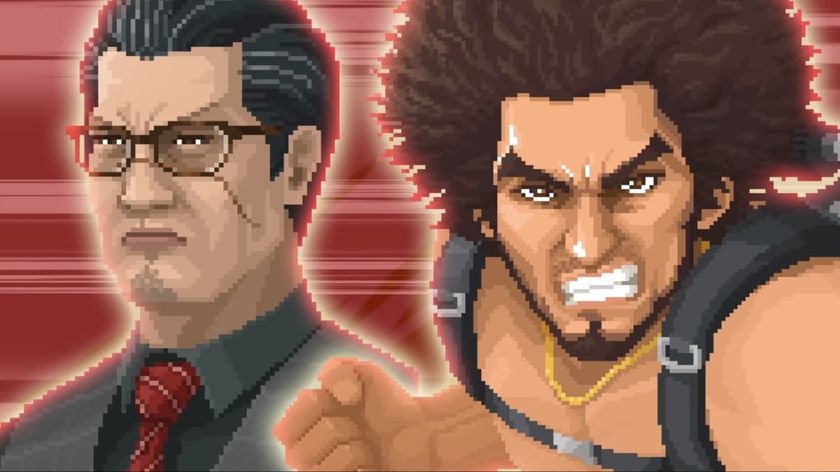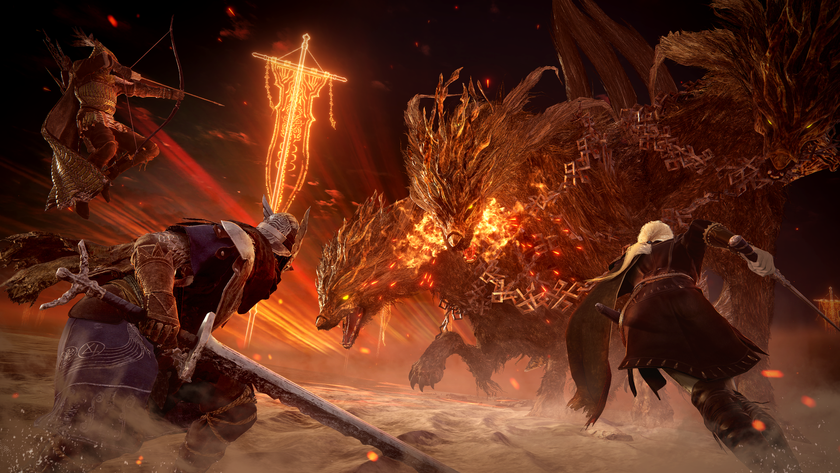Tim Schafer on making Full Throttle and remastering it for a new generation
An interview with the creator of the classic LucasArts adventure.
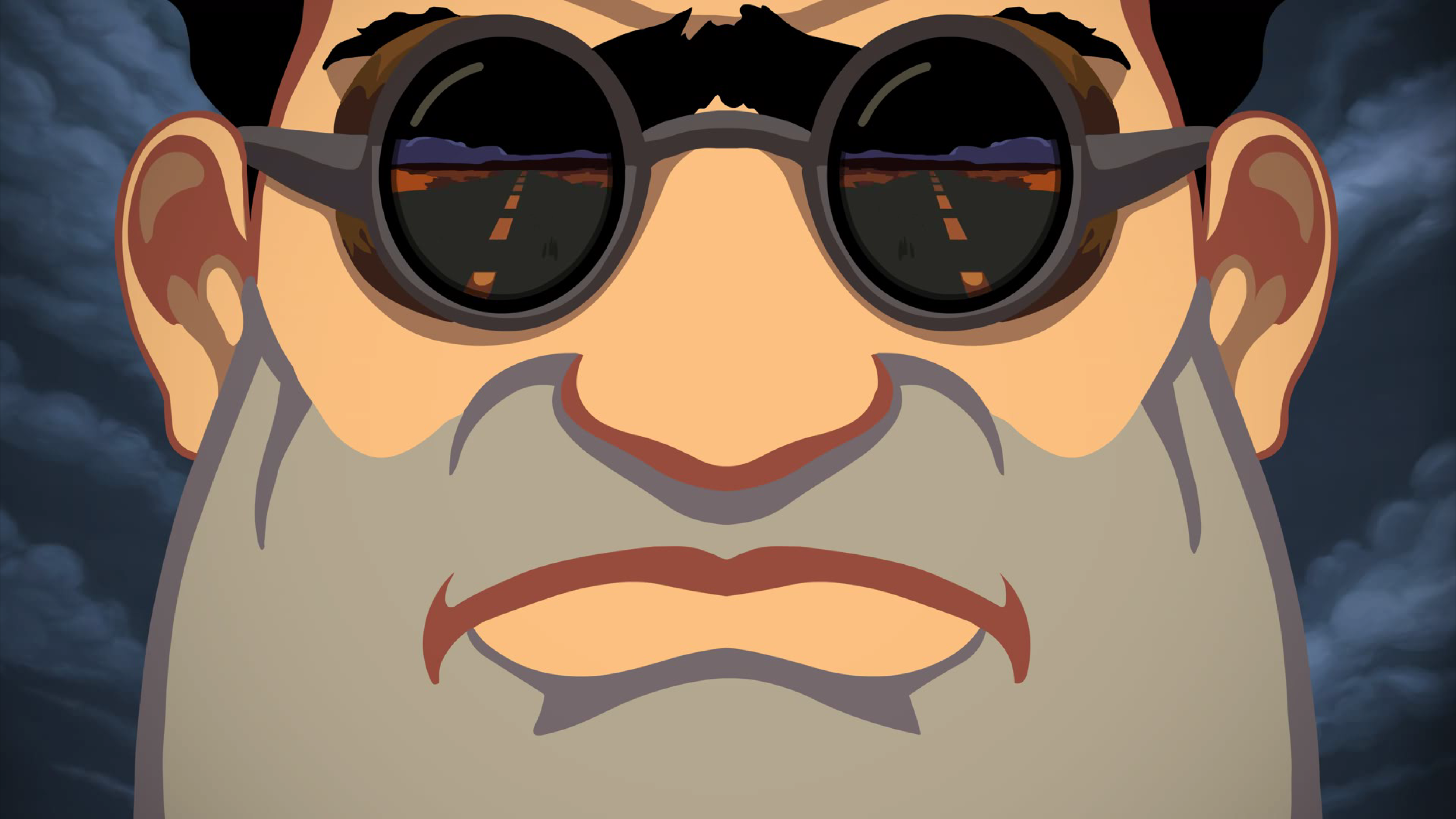
Twenty two years after it was first released, beloved point-and-click adventure Full Throttle was given a second lease of life. Writer/director Tim Schafer returned to his first game as a project lead and—with the help of his studio Double Fine—remastered the visuals and audio to make it shine like the elaborate chrome exhausts on its hero’s motorcycle. I talked to Tim about his memories of making the game and the challenges of remastering it.
PC Gamer: What’s it like returning to something you made 22 years ago?
Tim Schafer: It’s been educational. I was in my 20s when I made Full Throttle, and it’s been interesting looking at how I wrote dialogue back then based on my life experiences at the time, and how I interpret it differently now that I’m older. And now that I’ve actually been a biker on the run for a crime I didn’t commit, that adds a lot of depth to it too. I had no idea what that was like back then.
Do you have fond memories of working on the game?
We got a lot more ambitious after Day of the Tentacle. We did a lot of fullscreen animation and kinetic chase scenes with 3D bikes and trucks. And that scope really hit us hard when we realised how much time it would take to make. We tried cutting some stuff, but it was still a huge, expensive project. It was a quantum leap from Day of the Tentacle, taking adventure games into a whole other realm of storytelling and presentation.
I have fond memories of making it and working with so many great people. And I was reminded of that when we got them back together to record the commentary for the remaster. We had a little team reunion, and I was glad that they had pleasant memories too. They weren’t like “You almost killed us!"
Was there a lot of pressure on you as project leader on a game from a big, respected company like LucasArts?
There was some pressure, but mostly we got the support we needed to make the game great. Quality was always the number one thing at LucasArts, and that came from the top. George Lucas and ILM weren’t making B-movies, so we couldn’t make B-games. We had this idea that we had to be the best, and that was something George made clear in his directives to LucasArts. Stay small and be the best, and don’t lose too much money.
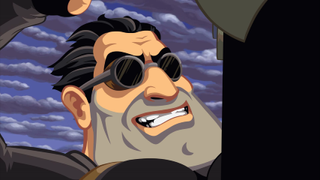
Did George ever stick his head through the door?
He had a lot going on, even back then, but he would show up occasionally. He checked out the storyboards for Day of the Tentacle, but he didn’t make any notes. He was just glad we were doing them. He looked at Monkey Island too, but Ron Gilbert and I have different stories about what he said. I just remember being nervous.
A lot of people read the game as being post-apocalyptic...
The biggest gaming news, reviews and hardware deals
Keep up to date with the most important stories and the best deals, as picked by the PC Gamer team.
It was definitely inspired by Mad Max, but not in the sense that the world’s a wasteland and humanity is falling apart. It was the stoicism of Max as this tough guy hero. He’s capable and smart, but he’s also calm and quiet. He’s not looking for trouble, but it always finds him.
Toshiro Mifune’s character in Yojimbo was a big inspiration too. He’s an out of work samurai just looking to get by, and he keeps getting stuck in the middle of warring clans and other situations that force him to reluctantly unsheathe his sword.
The energy and direction of Road Warrior was an influence too. Strapping the camera to vehicles, low to the ground, making everything feel super fast, the outrageous vehicle designs.
What about the game’s distinctive art style?
We loved making Day of the Tentacle look like a classic Chuck Jones cartoon, but a lot of people thought it was too childish. We didn’t really care, ‘cause we thought it looked awesome, but it turned some people off. So with Throttle we wondered if we could do cartoony, but for adults. This is when we started using the term ‘stylised’ more often. Not photorealistic, but not for kids either.
We looked at Mike Mignola’s Hellboy comics and the MTV animated series Æon Flux. Stuff that was definitely not for kids, but exaggerated and stylised. Mignola’s backgrounds are really minimal, with a lot of silhouettes and dark spaces that draw your eye to the characters and the focal points of the scenes. That was of the biggest influences on the look of the game.
We went up to Skywalker Ranch and visited the archive, which is this big atmosphere-controlled building where they keep a lot of the important Star Wars stuff. And we found this folder of Full Throttle stuff, which you can see high-res scans of in the remaster. The Mike Mignola influence is even stronger in those original drawings.

One of the biggest threats in the game isn’t the end of the world or anything like that, but a motorcycle company moving into producing minivans...
It’s so tempting when you’re writing a story to have the world be in danger. It’s a workable plot device. But in the world of Full Throttle, which is kind of desolate, I tried to think of something else. Biker culture’s all about being born to lose, with a kind of nihilistic viewpoint. If you talked to bikers about global warming, it probably wouldn’t feel like a threat to them.
“So I thought about what would end the world of a biker. Not the world, but their world. And that would be if the only maker of motorcycles in the country switched over to making minivans. It would be such an affront to everything they believe in.
Authenticity seems to be a major theme in then game: the idea of staying true to a fading way of life...
When researching bikers, reading stuff like Hunter S. Thompson’s Hell’s Angels, authenticity is the number one thing that comes up. There’s a lot of aspects of biker culture we didn’t put in the game. At first management were like “Wait a sec, you’re gonna make a game about selling drugs and beating people up?” But respect for authenticity is one thing we did put in there.
It wouldn’t be right if Ben was doing Sons of Anarchy stuff, but we can take the romantic idea of a biker, a person who just wants their freedom, and lean on that.
The intro sequence sets the tone of the game perfectly. What can you tell me about how it was written?
At the start of Mad Max 2 you have the camera speeding along the road and you hear the narrator talking about the legend of the road warrior in this kind of melancholy way. And you can trace this back to The Wild One. It opens with a shot of the road and Marlon Brando talking about a girl he remembers. And I thought, that’s how I wanna open Full Throttle. A shot of the open road and a guy talking about a girl in a melancholy way.
Roy Conrad is perfectly cast as Ben. His performance is brilliantly understated, despite being a leather-clad tough guy. Can you remember casting him?
We had all these audition tapes. It was all done on tape back then. And a lot of people were playing Ben as this gruff, tough guy biker. But Roy didn’t. He was stoic, stern, and had this quality of a guy who just wants to be left alone. He doesn’t want to get in your face. He’s almost gentle, but he has this rich, deep, resonant tone to his voice. It’s so compelling. And that’s why we would never dream of recasting him.
But we did find the original DAT tapes with the uncompressed voice recordings, so we were able to edit that and remix it with the whole soundscape in mind. He sounds even better now.
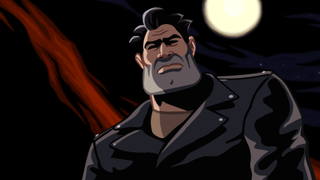
And, of course, the game wouldn’t be the same without the music of The Gone Jackals. How did they get involved?
I can’t imagine any other music in the game except The Gone Jackals. Keith Karloff (founder and frontman) rode up one day on his Harley and handed the tapes to our composer Peter McConnell, and that was it! He knew the culture, he knew the sound, and he knew a bunch of biker guys. He would hook us up with guys whose bikes we recorded for the game. We’d meet his friends and tape a bunch of microphones to their motorcycles and ride them around town.
Again, authenticity is the word. He was part of that culture, and the music was great. For the remaster we got our hands on the original reel-to-reel tapes the songs were recorded on and re-digitised them, remixing them in stereo.
Back then, if you were lucky, you were gonna hear the game through a pair of tiny speakers. So to make the music sound impactful, we had to crank it up way beyond what any sound designer would want until it distorted. In the remaster you can press F1 to switch back to the old sound and visuals, and you can hear how different the mix is. The music is quieter in the mix now, but it fits better with everything else. It sounds much more dynamic.
Full Throttle saw a shift from the old wall of verbs to a verb ‘coin’. What was the thinking behind that?
First of all, we wanted to have more real estate for the presentation. The artists wanted to fill the screen with art. And also, looking up and down in old adventure games kinda drives you a little crazy. It distracts from your immersion. So we thought: why can’t the verbs just appear right where your cursor is? Because that’s where your eye is. And that’s where the verb skull came from. Later in The Curse of Monkey Island they used a coin. And now people call that type of interface a verb coin. But that’s wrong! It’s a verb skull!
Game design, character, and story are all one thing. They’re not separate. So the interface should be part of the thematic presentation of who the main character is, and how they would solve a problem. If Bernard from Day of the Tentacle had to unlock a door with a ham sandwich, he’d lubricate a piece of bread with mayonnaise, slide it under the door, poke the key on the other side through with a toothpick to drop it on the bread, then slide it back out. But Ben would kick the door down and eat the sandwich.
There are two different ways of solving that problem, based on who the character is. The verbs reflect the character, so Ben’s gonna have a fist and a boot. I mean, bikers probably don’t go around licking stuff. Maybe they do. We wanted the interface to look like something a biker might have as a tattoo on their arm.
Full Throttle mixes pre-rendered 3D models and 2D art. Did that make the remaster more difficult?
There are three fullscreen shots in Day of the Tentacle, and not much is moving in them except for a few pixels. But here we have Ben driving down the road on a bike, and everything is moving. There are long cutscenes, and we had to hand-paint over all of them. And by ‘we’ I don’t mean me at all. The guys at Double Fine and our partners at Shiny Shoe had to paint 15,000 frames. It was a ton of work, and the most ambitious remaster we’ve done so far. That’s why we did it last, to build up our capacity to do it.
In the old days we didn’t have fancy rendering techniques, so we would render the bikes in a way that would look pretty lo-fi now. But then we’d hand-paint over them frame by frame to make them look good. But this time we were able to use more of a cel-shading type renderer for the 3D stuff so that it works in the game and automatically fits the art style. That helped a lot.
Were you tempted to go in and change anything?
We wanna keep true to the original work of art. It’s a collaboration of a bunch of artists coming together. The acting, the writing, the sound design, the music, the animation. All these people worked together to make this thing, and we don’t wanna mess with it. We just want to present it in the best way possible, and make it more true to the original intentions. We’re getting rid of artefacts, compression, and ageing technology to make it look like it looks in our minds.
If it’s set in space, Andy will probably write about it. He loves sci-fi, adventure games, taking screenshots, Twin Peaks, weird sims, Alien: Isolation, and anything with a good story.
Most Popular




